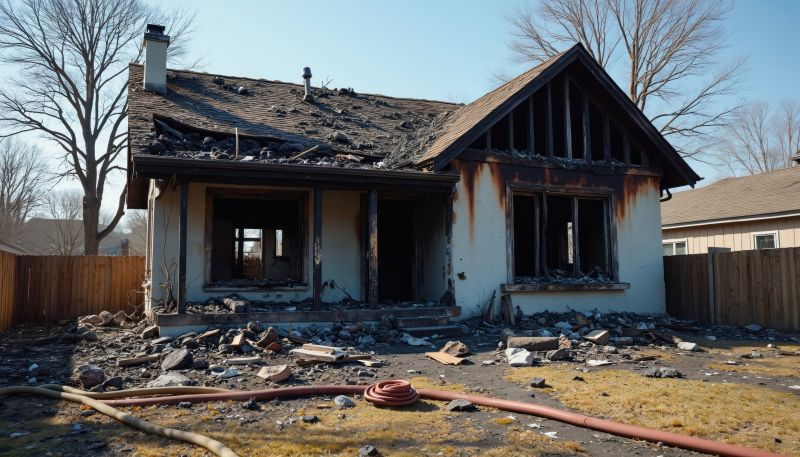Leading Fire Restoration Supplies For Effective Damage Control
Select from high-performance products that help mitigate fire damage and restore properties efficiently.
 Fire restoration products are essential tools and materials used to address the aftermath of fire incidents in residential, commercial, and industrial settings. These products help mitigate damage caused by heat, smoke, and soot, and facilitate the restoration process to return spaces to their pre-fire condition. From cleaning supplies to structural repair materials, a comprehensive set of fire restoration products ensures that professionals and property owners can effectively handle the complex challenges posed by fire damage.
Fire restoration products are essential tools and materials used to address the aftermath of fire incidents in residential, commercial, and industrial settings. These products help mitigate damage caused by heat, smoke, and soot, and facilitate the restoration process to return spaces to their pre-fire condition. From cleaning supplies to structural repair materials, a comprehensive set of fire restoration products ensures that professionals and property owners can effectively handle the complex challenges posed by fire damage.
Types of Products For Fire Restorations
Soot and Smoke Cleaners
Specialized solutions designed to remove soot and smoke residues from walls, ceilings, and surfaces, helping to restore indoor air quality.
Odor Neutralizers
Products formulated to eliminate persistent smoke odors from various materials and spaces, ensuring a fresh indoor environment.
Fire-Resistant Sealants
Sealants used to block smoke penetration and provide fire-resistant barriers in structural repairs.
Structural Repair Materials
Includes fire-rated drywall, framing, and insulation materials designed to restore the structural integrity of fire-damaged areas.
Protective Gear
Personal protective equipment such as masks, gloves, and coveralls to ensure safety during cleanup and repair activities.
Cleaning Cloths and Sponges
Heavy-duty cloths and sponges for scrubbing soot and debris from surfaces.
Dehumidifiers
Equipment to control moisture levels and prevent mold growth in fire-affected areas.
Fire-Resistant Paints
Specialized paints that provide additional fire resistance to walls and ceilings after cleanup.
Electrical Repair Supplies
Components and tools necessary for restoring electrical systems damaged by fire.
Water Extraction Equipment
Tools used to remove water used in firefighting efforts, preventing secondary water damage.
Fire-Resistant Doors and Windows
Replacement or repair products designed to improve fire resistance of openings in buildings.
Fireproofing Sprays
Sprays that can be applied to surfaces to enhance fire resistance and slow the spread of flames.
Smoke Ventilation Equipment
Fans and ventilation systems used to clear smoke and improve air quality during cleanup.
Fire Damage Assessment Tools
Infrared cameras and sensors that help evaluate the extent of heat and smoke damage.
Fire-Resistant Flooring
Flooring options that resist ignition and withstand high temperatures, suitable for repair projects.
Popular Choices
Effective solutions for removing soot and smoke residues from various surfaces, commonly used in fire restoration projects.
Popular products for eliminating stubborn smoke odors, often essential in post-fire cleanup.
Widely used to seal gaps and prevent smoke infiltration in repaired structures.
Commonly employed to control humidity and prevent mold growth after a fire incident.
Frequently used for scrubbing soot and debris during cleanup efforts.
Popular for finishing walls and ceilings with added fire resistance after restoration.
Essential for removing water from firefighting efforts, preventing secondary damage.
Commonly used to improve airflow and remove smoke from affected areas.
Widely used to ensure safety during cleanup and repair activities.
Popular for applying to surfaces to enhance fire resistance in restoration projects.
Often chosen for structural repairs to improve building safety.
Commonly selected for rebuilding and restoring fire-damaged structures.
The process of fire restoration often begins with safety assessment and debris removal, followed by smoke and soot cleaning. Specialized cleaning agents and deodorizing products are used to eliminate lingering odors and prevent further deterioration. Structural repairs may involve the use of fire-resistant materials and sealants designed to withstand high temperatures and prevent future damage. Additionally, moisture control products are vital to prevent mold growth in areas affected by firefighting efforts.
Selecting the right fire restoration products depends on the extent of damage, the materials involved, and the specific needs of the property. High-quality, durable products can improve the efficiency of restoration work and help achieve long-lasting results. Whether for professional restoration companies or DIY enthusiasts, understanding the variety of available products can aid in making informed decisions that align with safety standards and restoration goals.
Key Buying Considerations
- Extent of fire and smoke damage to determine the scope of products needed.
- Compatibility of cleaning products with different surface materials.
- Effectiveness of odor neutralizers in eliminating persistent smoke smells.
- Fire resistance ratings of sealants, paints, and structural materials.
- Ease of use and application methods for various products.
- Safety standards and certifications for fire restoration supplies.
- Durability and long-term performance of repair materials.
- Availability of replacement parts or refills for cleaning and deodorizing products.
- Compatibility of moisture control equipment with the affected environment.
- Protection gear quality to ensure safety during restoration activities.
- Cost considerations and budget constraints for comprehensive restoration projects.
- Environmental conditions such as humidity and temperature that may affect product performance.
- Recommendations from professional restoration experts or certifications.
- Storage and handling requirements for specialized products.
- Warranty or guarantee options offered by product manufacturers.
